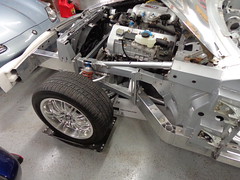Rc Cars History}

- Click Here For More Specific Information On:
- Generator Spare Parts For Sale
RC Cars History
by
Keith LondrieThe dawn of RC car racing began in the 1960’s when the first radio control system was available. The difference between a normal vehicle as we know it and a model RC vehicle is its size. These small “road runners” can be very fast and very precise. The innovations in the radio control system and in the model’s architecture, made them stronger, faster and easier to control.
Small nitro methane engines were available from the 40’s. In the mid ’66 El-Gi, (Elettronica Giocattoli) from Italy, released the first fully RC model. The car was available in shops in UK by December, the same year.
By the beginning of the 70’s a British company, called Mardave, began manufacturing RC models. They sold commercial models all over the UK.
In the early 70’s several US companies began producing models. Their products were at first 1/8 nitro powered kits. Their body was made of polycarbonate
The most popular model engine of those times was the K&B Veco McCoy. With the passage of time, producers took time to experiment with different types of heat sinks, engines, suspension types and larger fuel tanks.
US company Jerobee created in ’74 the 1/12 nitro Cox engine car. Several other companies created parts for it. Afterwards, Jerobee became Jomac and started manufacturing electric models.
1976 is a great year for the RC models’ history. Tamiya, a renowned company from Japan, entered the world of radio-controlled cars. Until ’76, Tamiya was notorious for their highly detailed miniature car models. Although they entered the market with very high prices, their kits were sold in no time. In ’79, the same company released their first real off-road buggies, the Sand Scorcher and Rough Rider. This was the beginning of a great company. Their early models are today collector’s items, reaching the value of $3000.
Because of this popularity, Tamiya re-released some of the early models in 2005. As expected, the products sold fast.
It would be a shame not to mention another great company. In 1980, Schumacher Racing UK was the first company to release the ball differential technology. This allowed model owners to adapt their racers to various terrain conditions very easily. Until then, on-roads had a solid axle. Thanks to the technology introduced by Schumacher Racing, switching from an elegant on-road to a rough off-road has never been easier. This very same company was the one to release CAT (Competition All Terrain) in 1986. In 1987 the model won the international RC championship, being considered one of the best off-road buggies of that time.
Keith Londrie II is a successful Webmaster and the owner and publisher of http://rc-mini-nitro-gas-electric-cars.info/ A website that specializes in providing tips on
Radio Control Cars
that you can research on the internet. Visit http://rc-mini-nitro-gas-electric-cars.info/ today!
Article Source:
eArticlesOnline.com}